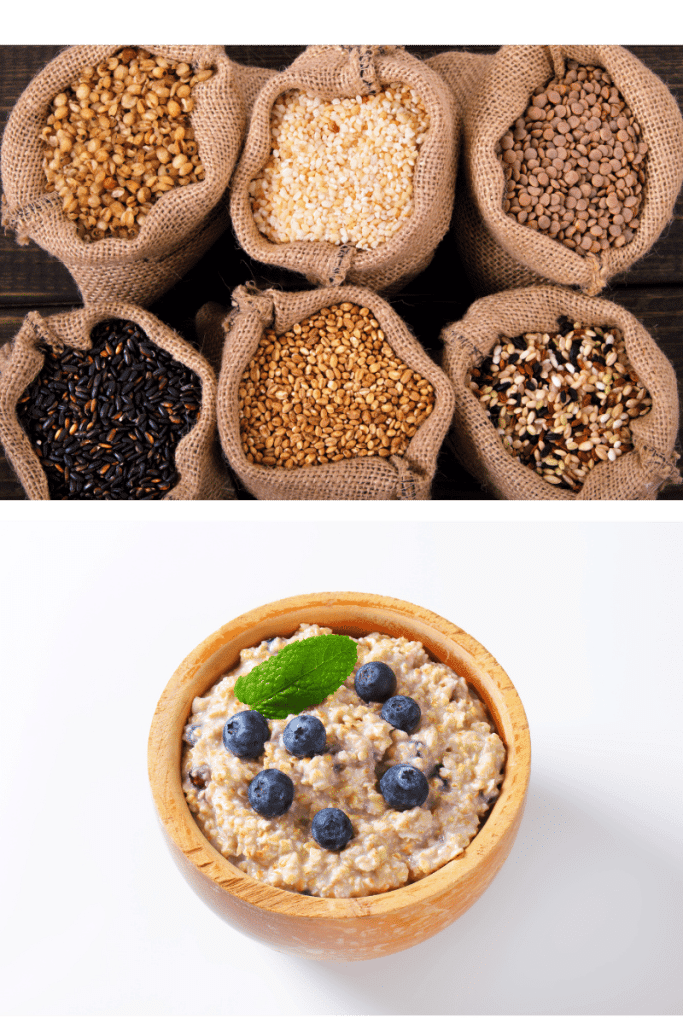Breastmilk and Whole Grains, 4 Whole Grains for Milk Production

You know what’s funny? When I first started studying lactation nutrition, I couldn’t believe how something as simple as oatmeal could make such a big difference! But after years of research and working with nursing moms, I’ve seen the amazing impact whole grains can have on milk supply.
Here is another article about the best foods in general to help with breastfeeding.
Oatmeal:
Let me tell you why oatmeal is absolutely incredible for milk production. It’s not just an old wives’ tale – there’s real science behind it! Oatmeal contains beta-glucan, a type of fiber that has been shown to increase prolactin levels (that’s your milk-making hormone).
Here’s my tried-and-true method for maximizing oatmeal’s benefits:
- Use steel-cut or old-fashioned oats (instant oats don’t have quite the same punch)
- Eat it within 1 hour of waking up
- Add a tablespoon of ground flaxseed for extra power
- Include some protein (like nuts or seeds) to maintain steady blood sugar
Pro Tip: Make overnight oats! I prep 3-4 jars on Sunday, and they’re ready to grab and go during those busy morning feeds.
Barley: The Forgotten Milk-Maker
This ancient grain contains a special polysaccharide called beta-glucan (yes, like oatmeal!) that supports milk production. But here’s what makes it unique – barley also contains a type of carbohydrate that helps with the let-down reflex!
My favorite ways to use barley:
- Add it to soups (it makes them creamy!)
- Use barley flour in baking
- Make a warm barley breakfast bowl
- Try barley tea (a traditional Asian lactation drink)
Brown Rice and Quinoa: The Dynamic Duo
Combining brown rice and quinoa gives you an amazing one-two punch for milk production. Brown rice provides the complex carbohydrates needed for sustained energy, while quinoa offers complete protein plus iron – crucial for milk production!
Quick Brown Rice + Quinoa Power Bowl Recipe:
- Cook 1 cup each of brown rice and quinoa
- Add steamed vegetables
- Top with a protein source
- Drizzle with olive oil and tamari
- Sprinkle with sesame seeds
Making It Work in Real Life
Let me share my top tips for fitting these grains into your busy mom schedule:
Batch Cooking Strategy:
- Sunday: Cook large batches of 2-3 grains
- Portion into containers
- Refrigerate for up to 4 days
- Freeze extra portions for the following week
Easy Ways to Include More Whole Grains:
- Morning: Oatmeal or quinoa breakfast bowl
- Lunch: Brown rice and vegetable stir-fry
- Dinner: Barley soup or grain-based salad
- Snacks: Homemade oat-based lactation cookies
My “Never Fail” Lactation Cookies Recipe:
- Link to recipe
Storage Secrets I’ve Learned:
Remember when I ruined an entire batch of cooked grains because I stored them wrong? Learn from my mistake! Here’s what works:
- Cool grains completely before storing
- Store in airtight containers
- Keep in fridge for 4-5 days max
- Label everything with dates (mom brain is real!)
Timing Your Grain Intake
Through working with hundreds of moms, I’ve found this timing schedule works best:
- Morning: Oatmeal or quinoa
- Lunch: Brown rice or grain bowl
- Dinner: Lighter grain options like barley soup
Important Tips to Remember:
- Stay hydrated – grains need water to help with milk production
- Introduce new grains gradually
- Listen to your body and baby’s reactions
- Combine with other lactogenic foods for best results
The Whole Truth About Breastmilk and Whole Grains
Here’s what I wish someone had told me early on: consistency matters more than quantity. It’s better to have smaller, regular portions of these grains than to load up on them occasionally. Your body responds best to steady, reliable nutrition.
Remember, while these grains are fantastic for milk production, they’re just one piece of the puzzle. Combine them with good hydration, regular nursing or pumping, and adequate rest for the best results. You’re doing an amazing job, mama – keep nourishing yourself and your little one!
